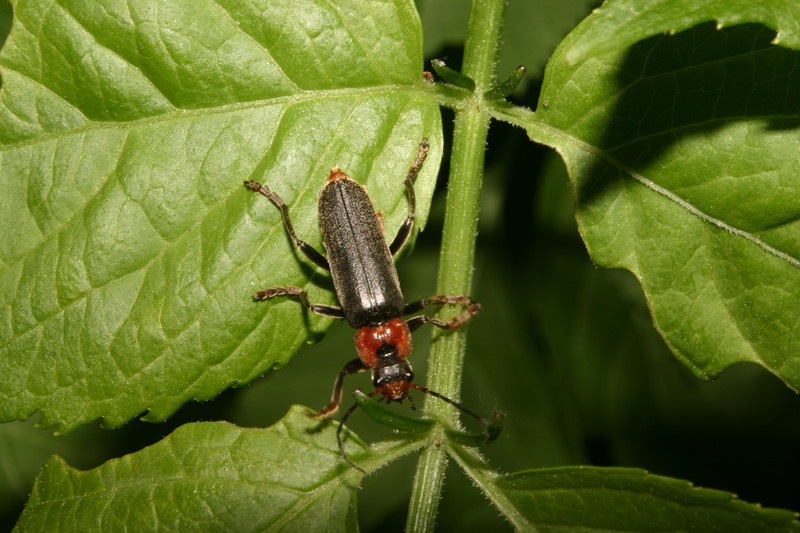The soldier beetle is a beneficial insect. A second common name for the soldier beetle is leatherwings.
Both adult and especially larvae soldier beetles are voracious eaters preying on insect pests including cucumber beetles, corn rootworms, aphids, grasshopper eggs, caterpillars, and beetle larvae.
Soldier beetles are found throughout North America. There are numerous species.
Soldier beetles belong to the scientific family Cantharidae.

How to identify the soldier beetle
An adult soldier beetle is an elongated, slender, nearly flat beetle ⅓ to ½ inches long.
Soldier beetles often have leathery-looking wing covers—thus the name leatherwings. (One of the first species of soldier beetle described had a color pattern reminiscent of the red coats of early British soldiers, hence the common name soldier beetle.)
Good Products for Pest and Disease Control at Amazon:
- Garden Safe Snail and Slug Bait
- Bonide Sulfur Fungicide
- Monterey BT Caterpillar Killer
- Neem Bliss 100-% Cold Pressed Neem Oil
- Safer Brand Insect Killing Soap
- PyGanic Botanical Insecticide
Soldier beetle life cycle
Adult soldier beetles typically feed and mate on flowers. The female lays eggs in clusters in the soil. Eggs hatch in about ten days. The tiny larvae are white-colored and display little or no activity until the first molt.
With each successive molt, the larvae darken until they become velvety black. And with each molt, the larvae become more active. Soldier beetle larvae feed on a multitude of soft-bodied insects until winter. They overwinter in the soil and pupate in the spring before emerging. There are up to two generations each year.
How to attract soldier beetles to the garden
Attract soldier beetles to the garden by planting goldenrod, milkweed, hydrangeas, and catnip. Soldier beetles will feed for nectar and lay eggs on these plants.
Related articles:
Vegetable Garden Beneficial Insects
Vegetable Garden Organic Pest Control
Vegetable Garden Diseases Problem Solver
Vegetable Garden Organic Weed Control
Garden Planning Books at Amazon:
- Vegetable Garden Almanac & Planner
- Kitchen Garden Grower’s Guide Vegetable Encyclopedia
- Vegetable Garden Grower’s Guide
- Tomato Grower’s Answer Book















